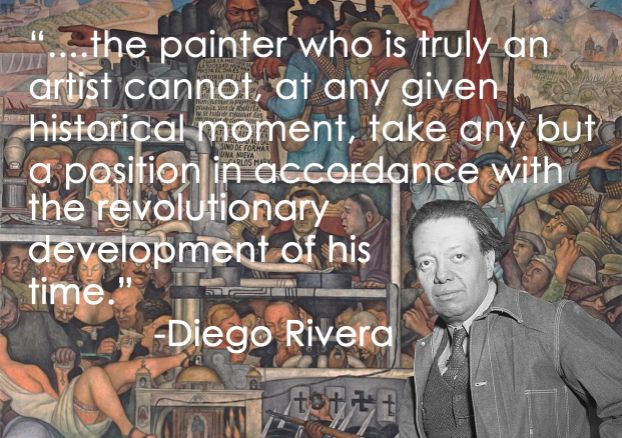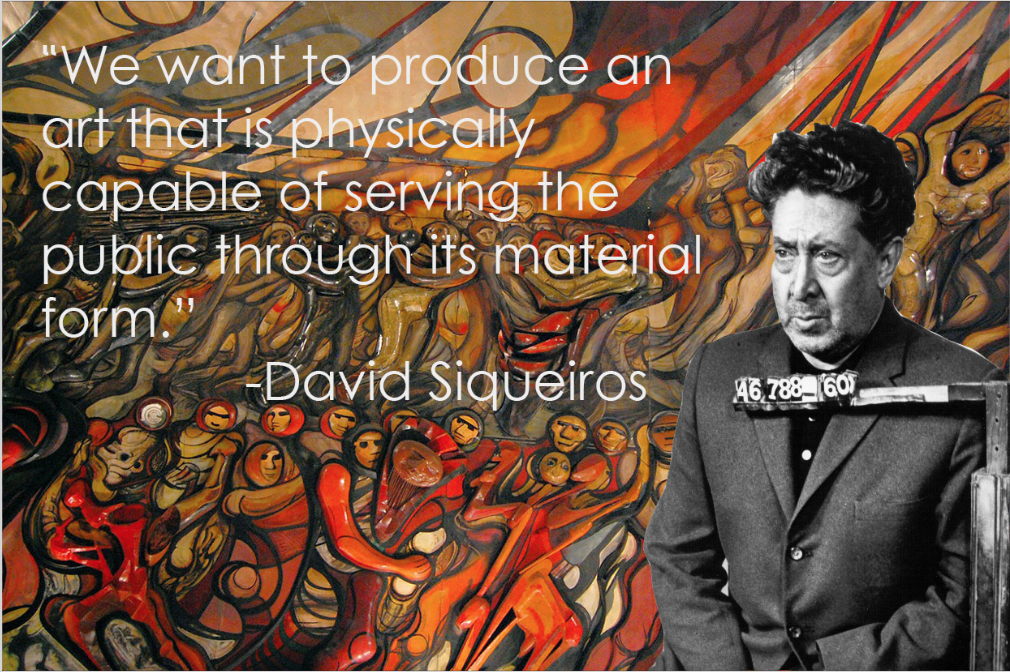Mexican Muralism first spurred as an artistic movement when the new minister of education under Alvaro Obrégon, José Vasconcelos, attempted to centralize the Mexican government after years of civil war. One of his main visions was of a social whole, and he saw that this could be best achieved through public monuments and propaganda. Hoping to create a new tradition in Mexico, artists began to embrace the idea of art that evokes a “social wholeness.” The three great leaders in this movement, or “Los Tres Grandes,” were José Clemente Orozco, Diego Rivera, and David Alfaro Siqueiros.
With this new idea of art making put into place, artistic manifestos came into full bloom. Rivera published The Revolutionary Spirit in Modern Art in 1932, calling for art as a social creation. Rivera was a firm believer in Communism, and he saw that revolution lay in the creation of a proletariat art. According to Rivera, “The artist is a direct product of life” and a true artist must be a reactionary to the events of their time. In his manifesto, he highly criticizes abstraction, because it is a limiting art form that is only understood by few – the elite. He instead calls for an art that battles the class struggle and eliminates the bourgeoisie.

Siqueiros published A Declaration of Social, Political and Aesthetic Principles in 1922, calling for an end to easel painting. This manifesto demands artwork that “belongs collectively to the people” and is centralized on the origins of the indigenous people in Mexico. Siqueiros expanded upon these ideas in a later publication, Towards a Transformation of the Plastic Arts. In this manifesto, he adopts Rivera’s idea of the artist being a reactionary to the times and emphasizes the importance of art that “serves the public.”
As stated in the above manifestos, Mexican Muralism was an entirely public art. Unlike traditional easel art that was created for the art market, the artwork of Mexican Muralism was created in public places. The artwork draws inspiration from the roots of the Mexican people, displaying both their indigenous culture and European culture. This mix is referred to as mestizo. Many artworks borrow styles from European Renaissance fresco paintings.

